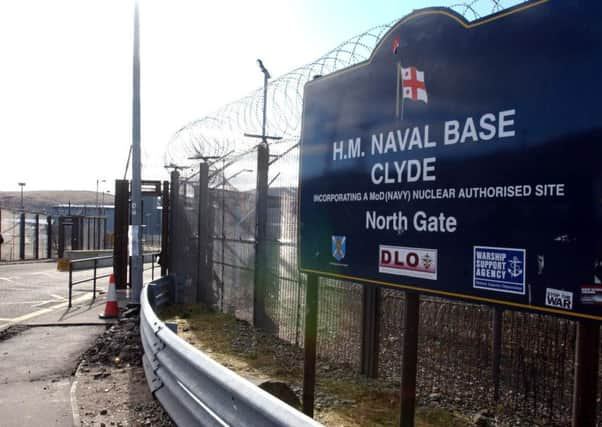New rail station at Faslane submarine base to be investigated
This article contains affiliate links. We may earn a small commission on items purchased through this article, but that does not affect our editorial judgement.


Funding was announced today for a feasibility study into transport improvements around the complex near Helensburgh, which is due to grow to 8,500 staff over the next five years.
One option is a rail station on the Glasgow-Mallaig West Highland Line, which runs close to HM Naval Base Clyde, home to the UK’s Trident nuclear-armed submarines.
Advertisement
Hide AdAdvertisement
Hide AdThe £85,000 study was among eight approved by transport secretary Michael Matheson under Transport Scotland’s local rail development fund.
The other schemes which will share funding of £817,000 are for possible improvements in Aberdeen, East Lothian, Leith, St Andrews, and park-and-ride sites between Perth and Montrose, including at stations.
Improving station access in Dunblane and Kirkconnel will also be explored.
The St Andrews cash is for further work on potentially re-opening the town’s rail line, which closed 50 years ago.
In Leith, the South East of Scotland Transport Partnership will examine whether some freight arriving by sea could be transported by rail from nearby Seafield rather than by lorry.
Frank Roach, of the Highlands and Islands Transport Partnership, which won the Faslane funding, said: “We are already working on Fastline Faslane: The Case for Change, along with our partners Argyll and Bute Council, Strathclyde Partnership for Transport and the Royal Navy, studying connectivity to the base, which is Scotland’s largest single employer site.
“It is scheduled to grow in the coming years with new vessel deployment and headquarters functions.”
He said the funding would enable preliminary and detailed options for a multi-modal transport appraisal into transport problems and opportunities at the base.
Advertisement
Hide AdAdvertisement
Hide AdThat would “examine how Ministry of Defence personnel and private sector contractors can access HMNB Clyde with minimum disruption to the local community, reducing reliance on the car”.
Mr Roach said the study would focus on the impact of 1,500 extra naval personnel at the site, which would increase the workforce to 8,500.
Any station site would have to have good pedestrian access to the base, so the location of a temporary halt used by prisoners of war in 1945 is unlikely.
Mr Matheson said: “We know the costs of transport appraisal can be a significant barrier, but they are a fundamental evidence-gathering step when considering transport issues and opportunities.
“The local rail development fund responds to this by providing practical help.”